The other day I saw the news that the latest version of Ubuntu 11.04 “Natty Narwhal” had been released. So, like any self-respecting geek, I updated my netbook (which runs Ubuntu).
The upgrade was smooth and easy, but one thing I noticed right away after rebooting was that nothing looked the same.
The thing is, Ubuntu has committed to using the new “Unity” interface for Ubuntu, and they have also folded the netbook remix stuff into the main “Ubuntu” release. What this means is that, starting with 11.04:
- Ubuntu uses “Unity” by default, even on netbooks
- There is no longer a separate “netbook remix” for Ubuntu
Now, don’t get me wrong – I appreciate the “Unity” interface, and I like the idea and the execution of it is pretty great… but I disagree with the idea that this is the perfect interface for netbooks.
First off, the “Unity” interface is rather graphically intensive – it has some neat 3-D effects as you mouse over the bar – and this just really kind of bogs down a netbook. Now, maybe newer netbooks have more powerful graphics cards, but I always think of Linux as being great for older computers too, and the “Unity” interface just doesn’t cut it on older hardware.
Now, you can always switch back to the Ubuntu Classic UI (by using the Logon Screen app, or by just choosing at the login screen itself), but even that is a bit of a compromise, especially for netbooks. The netbook UI was optimized for small screens, where every inch of screen space was valuable.
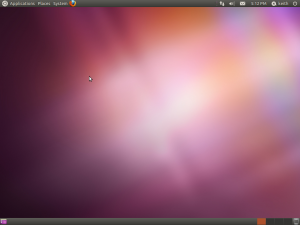
So, I set about trying to find how to bring back that classic “netbook” look that previous versions of Ubuntu Netbook Remix (UNR) had. After some experimentation with a virtual machine (and, in the extreme, trying out some other Linux distros to see if they were more netbook-friendly) I found the way to do it.
Before we begin, I suggest that you switch to the classic UI before beginning – that way you won’t need to worry about fiddling with the “Unity” launcher bar thing.
There are 4 packages you need to have before you begin, so fire up the Synaptic package manager (or a terminal if that’s your thing) and make sure these packages are installed:
These 4 packages are what basically make up the older “Netbook Remix” edition of Ubuntu.
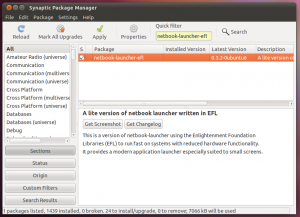
The first thing to do is to go to your startup applications in Ubuntu and add netbook-launcher-efl and maximus to your startup applications.
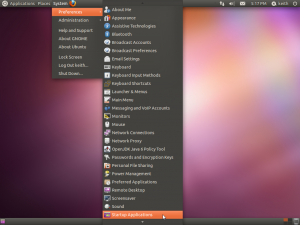
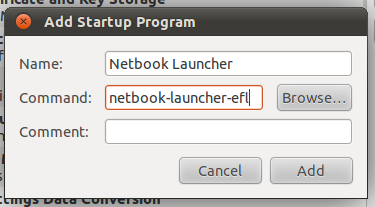
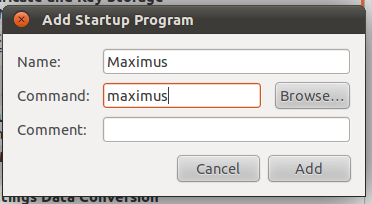
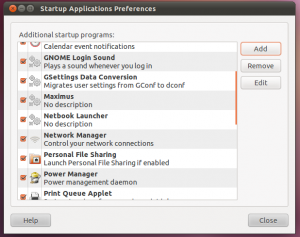
Next, add the window-picker-applet and go-home-applet to the top panel in Ubuntu. You may also want to remove some of the other panel items that are up there currently, and then re-size and re-position the panels so they look like the old netbook remix. If you have a panel at the bottom of the screen, remove that as well.
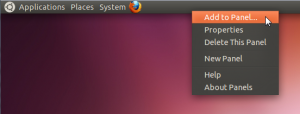
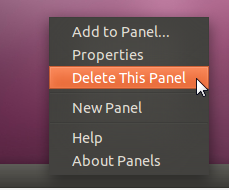
Finally, reboot the system and voilà! The look of the old Ubuntu Netbook Remix is back!
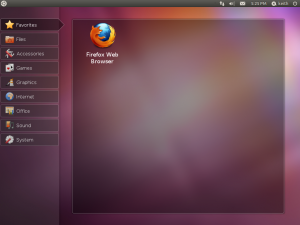
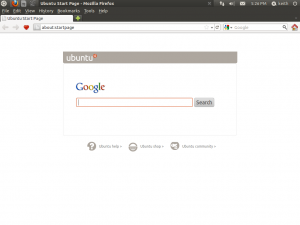
I really like the netbook interface – I think it’s the best fit for netbooks, especially not-very-powerful ones like mine. The maximus package keeps windows from having a title bar (it gets merged into the panel at the top, where the window-picker-applet takes care of showing you the app’s name and giving you a close button) and of course keeps windows maximized all the time (which is the only way you’d ever want them to be on a netbook’s small screen). Plus, the netbook launcher is just great for launching the few programs you use on a netbook. The icons are huge and easy to click when using a little touchpad, and the graphics are smooth but not overdone.
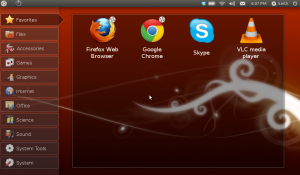
It’s worth mentioning that during my experimentation, I tried out a few other options, including some different distributions that claimed to be good for netbooks. One distribution I found called “EasyPeasy” was based on Ubuntu and was basically the classic “Netbook Remix” that I remember. However, it seems to lag behind Ubuntu in terms of releases – it was still using Firefox 3 for example. Still, if you’re just getting a new netbook, you might want to try EasyPeasy from the start, as it comes “out of the box” with the netbook look & feel.
However, if you want to stick with the Ubuntu you know and love, these steps will bring back that classic Ubuntu Netbook Remix interface, just the way you remember it.
(Update: if you’re using Ubuntu 11.10 Oneiric Ocelot, I’ve got some extra steps for you here that should do the trick.)
thanks, I was looking for this information before upgrading to 11.04, I looooove the older-style netbook menus; they are much faster and more functional on a netbook than unity.
Glad you found it useful! I totally agree with the older-style netbook menus. Unity is great and all, but just too much going on (both visually and in terms of CPU load) for a netbook.
I wish I had read this before my upgrade to 11.04, which caused me a lot headache. And finally the problem is solved. Hope Ubuntu team has noticed this article and would integrated this in the future upgrade.
Unfortunately, I think the Ubuntu team is well aware of people’s feelings regarding this, and they are just choosing to ignore them and forge ahead with “Unity.” (Also soon I think they’re making some more controversial changes, like switching to GNOME 3 and using a new window manager, but I don’t have the specifics handy.)
It’s a bold move on their part, and I can sort of understand their reasons for doing so and admire them for their willingness to stick to their guns and do something different… but in the end, it’s just not for me. At least, not yet.
Great post! Upgrading to Natty was a big disappointment until I found this.
Glad you found it useful! It is good to know that although they don’t exactly go out of their way to tell you how to switch back to the classic interface, it is at least possible and relatively easy and straightforward. (I can only hope it stays that way in future versions!)
Is there a way to change the language of netbook-launcher? My whole system uses the dutch language, except voor netbook-launcher. It displays all text and icons in english. I can’t find any settings for netbook-launcher, is that right?
I’m afraid I don’t know anything about different languages in Ubuntu. You might try asking a question over at http://askubuntu.com/, someone there will probably know a lot more than I do. Sorry!
Brilliant! I went back to my no-longer-supported v9 until I found this. I thoroughly agree. The unity interface is horrible on a netbook compared to the wonderful old netbook remix interface.
Such a clear and simple how-to explanation, thank you.
Just an added note for those of us capable of screwing up things that ought to be obvious, please note that when you do the add to panel stuff you just have to find the window-picker and home applets in the drop-down list, highlight them and click Add: don’t type them in as you needed to do in the Startup applications bit!
Thank you much!!!!! (I wander who came up with the idea that Linux should be “unified”)
Keith, Many thanks for taking the time to work through this and especially for sharing it with the rest of the world. It would be nice to bring this to the notice of the Ubuntu community in general and I’m guessing that the developers of Maximus, Go-Home and Window-Picker wouldn’t be adverse to having their apps promoted. Time for us to send some email, I think. 🙂
Thanks for this. I never did like Unity. Much prefer the old style, which I got introduced to by EasyPeasy, coincidentally enough, but since EasyPeasy appears to be abandoned, this is the next best thing.
any idea how to do this on 11.10?
Unfortunately, no, not that I know of. Sorry!
The packages I’ve mentioned (except for maximus, I believe) have been removed from the default software sources in Ubuntu 11.10.
Also, there really isn’t the same “classic” desktop environment anymore – Unity is here to stay, for better or worse.
You probably could do it, but it would take quite a bit of work – you’d have to pick some different software sources (and I’m not sure which ones) to get the packages you need, and figure out a way to get it back to the “classic” GNOME desktop without Unity.
With 11.10 I actually gave up trying and decided to give Unity a spin… they’ve improved many of the things that annoyed me previously, but I still have some gripes… but that’s for another blog post!
Thanks a ton for this dude! Lets hope it works, am gonna restart my machine now!!